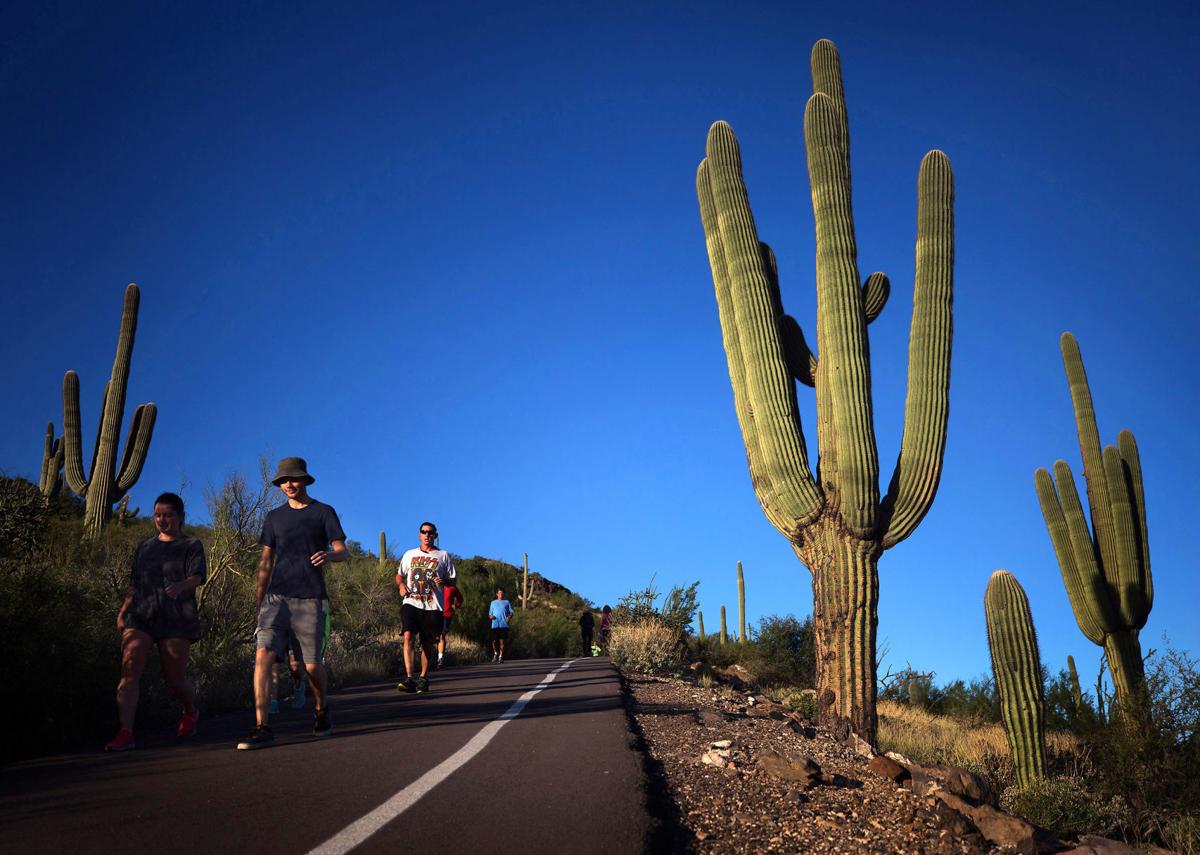The saguaro cactus is a long-lived icon of the Sonoran Desert, but some researchers are wondering how the desert species will fare in the hotter, drier climate of the future.
A new study, led by former University of УлшжжБВЅ researcher Susana RodrУguez-BuriticУЁ, analyzed data compiled over 48 years that included information on more than 5,800 saguaros on Tumamoc Hill, an 860-acre ecological reserve owned and operated by the UA in partnership with Pima County. The research team found that small changes in the hillтs landscape might help protect saguaros from the impact of climate change.
тThis was an ambitious but highly valuable undertaking, since these plants can live for over 100 years,т said co-author Daniel Winkler, a U.S. Geological Survey research ecologist. тAs a result of the long-term data set, weтre able to identify how saguaro populations have been maintained over time and predict how theyтll likely respond to future climate change.т
People are also reading…
The study recorded changes in saguaro populations over three time periods, allowing the team to analyze how fluctuations in climate affected growth over time. The data provided information on how each saguaro changed individually, as well as how the population changed as a whole, specifically with the creation of new saguaros, which is known as тrecruitment.т In addition to climate conditions, researchers also studied differences in saguaro growth across the hillтs north, south, east and west slopes.
Larry Venable, co-author and director of research at the Desert Laboratory on Tumamoc Hill, said having data that spanned 48 years was crucial.
тWe knew how much they grew from 1964 to 1970, how much they grew from 1970 to 1993 and how much they grew from 1993 to 2012,т he said. тSo, we had three sets of growth rates for different times. Some of those periods were very wet and cool, and some were very hot and dry.т
Different response to climate
In previous research, changes in saguaro populations were largely attributed to climate, and the team confirmed that saguaros thrive during wet periods but are particularly vulnerable during extended droughts and extreme freezes. However, by studying how climate interacted with subtle variations in the landscape, the team found some unexpected patterns.
тWhat we found with this 21st century data is that saguaros are responding somewhat differently to the climate. Weтre having an increased number of days with extreme temperatures, both hot and cold, and itтs been getting warmer and drier,т Venable said. тIn old data, recruitment was more likely to occur in favorable conditions that included low drought and above-average precipitation. In the more recent decades, recruitment has been more likely under less favorable conditions, like high drought severity and low winter precipitation.т
For example, saguaros typically grow in larger numbers on the south- and east-facing slopes because they tend to be warmer and receive direct sunlight.
On Tumamoc Hill, however, the south and east slopes are particularly steep and rocky, meaning water retention is too low for saguaros to take hold. Alternatively, the north-facing slope, which typically receives less sunlight, has deeper and richer soil, allowing it to retain water. As a result, saguaros could establish on the north slope as well, even in years when the desert is hotter and drier than normal.
This particular study did show that the north-facing slope experienced a large spike in new saguaro growth, even during years with high drought severity and many extremely warm days.
тThe north side went from being dominated by old plants to being dominated by new plants, and this was occurring in years that would have been considered bad, according to previous research,т Venable said.
This is the first study to show large saguaro growth occurring with unfavorable conditions. According to Venable, saguaros behave differently on different slopes and the diverse distribution of saguaros across the hill could protect them from harsh environmental conditions as they come.

Researchers who studied the 5,800 saguaros on Tumamoc Hill said saguaros surprisingly thrive on the less-sunny, north-facing slope because it has deeper and richer soil, allowing them to retain water.
Overall decline
Although the study shows promising results when it comes to saguaros and climate change, according to Venable, researchers are still seeing an overall decline in saguaro growth.
тOur data shows that the saguaros at Tumamoc Hill have been declining and are continuing to decline,т he said. тIf it continues to get hotter and drier with more freezing, thatтs probably going to continue into the future.т
Even with recent growth and the unexpected birth of new saguaros on certain slopes, itтs not enough to compensate for the death of saguaros across the hill.
Saguaros have also become threatened by other exotic plants in recent decades, including buffelgrass, an extremely flammable and invasive grass species. Since 1994, buffelgrass has increased by 300% in the Sonoran Desert.
Because plants like saguaros live for so long, Venable and RodrУguez-BuriticУЁ emphasized the importance of a long-term data set to study the plantsт physiology and population over time. Even with local threats and steady decline, they say the saguaro isnтt going away anytime soon.
тItтs not like all of the saguaros are going to die all together,т Venable said. тItтs a very long-lived plant and has episodic recruitment. It takes a long time to wipe them out and a long time to bring them back.т





















